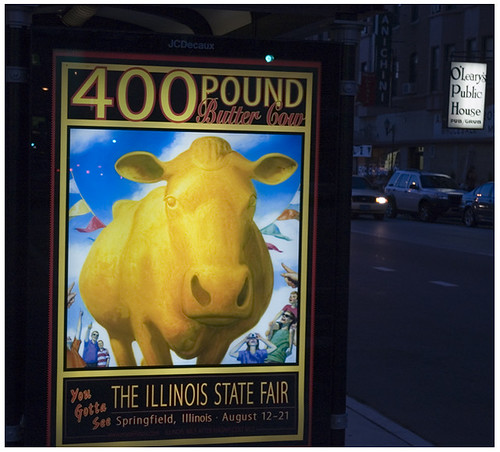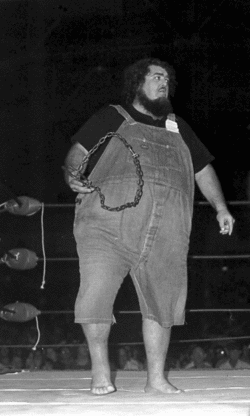
 |
|
|||||||
| Image of the Day Images that will blow your mind - every day. [Blog] [RSS] [XML] |
 |
|
|
Thread Tools |
Rating: 
|
Display Modes |
|
|
|
|
#1 |
|
polaroid of perfection
Join Date: Sep 2005
Location: West Yorkshire
Posts: 24,185
|
The Cellar: I now know more about something than anyone I know knows anything about.
Thank you
__________________
Life's hard you know, so strike a pose on a Cadillac |
|
|

|
|
|
#2 | |
|
The future is unwritten
Join Date: Oct 2002
Posts: 71,105
|
Quote:

__________________
The descent of man ~ Nixon, Friedman, Reagan, Trump. |
|
|
|

|
|
|
#3 | ||||
|
Tornado Ali
Join Date: Apr 2008
Location: Used to be woods in town on prairie; now Emerald City
Posts: 82
|
Quote:
 Quote:
 SundaeG, imagine this: There must be someone in Chicago right now who is descended from a. a 1666 Londoner who got burned out of their house in the Great Fire of London, who was the ancestor of b. an 1871 Chicagoan who got burned out of their house in the Great Chicago Fire, who was the great-(great-)grandpa or -ma of c. this modern-day Chicagoan. Quote:
 Juanco, that might be overstating it a bit. There never has been any scientific evidence that proved that the cow of Mrs. O'Leary did have anything to do with the fire, or whether Mrs. O'Leary herself was with the cow at this point if it did. There was conflicting testimony from Day 1 (or so), and it at least seems likely (though not established by standards acceptable to a scientist  ) that Mrs. O'Leary would not have been present at the precise moment the fire started. Everyone is pretty much agreed, however, that the fire did start with the O'Leary barn. ) that Mrs. O'Leary would not have been present at the precise moment the fire started. Everyone is pretty much agreed, however, that the fire did start with the O'Leary barn.The esteemed members of the Chicago City Council, I recall having read over the weekend, passed a resolution in recent years officially exonerating Mrs. O'Leary from blame. Let's see whether I can find that again. . . . Check out this little essay on Mrs. O'Leary's guilt or innocence, in which we find the following passages: "In 1881 the Chicago Historical Society installed a marble plaque marking the spot on the much more solid home that had been built at 137 DeKoven {old street-numbering system}. The alley behind the house became a kind of sacred site for local residents, who protested when the city finally filled it in and paved it two decades after the great conflagration. And when Chicago constructed a new fire academy in the early 1960s {woo-hoo!}, it selected as the location the block where the calamity began." "Did Mrs. O'Leary's cow start the Great Chicago Fire? "There's evidence that suggests she did. {Then several reasons follow.} . . . "But one can find good reason to think that poor Mrs. O'Leary and her benighted cow--named Daisy, Madeline, and Gwendolyn in assorted retellings--were innocent. {Then reasons for this view.} . . . "Like the several cowbells that different people have sworn were the one the four-legged perpetrator (who herself perished in the fire  ) wore around her neck that fateful night, it is possible that any one of these theories has the truth behind it, but all of them are open to question" {my emphasis}. The essay goes on to discuss why it was that the public latched onto the possibility that the fire was started on accident by a dumb cow (and not, for instance, on purpose by international terrorists). ) wore around her neck that fateful night, it is possible that any one of these theories has the truth behind it, but all of them are open to question" {my emphasis}. The essay goes on to discuss why it was that the public latched onto the possibility that the fire was started on accident by a dumb cow (and not, for instance, on purpose by international terrorists).Don't miss this "library" page with links to Mrs. O'Leary's testimony and the official Board of Police and Fire Commissioners' Report. In the 1990s one writer developed a strong alternate theory of who started the fire, if not the cow kicking over a lantern. I recall reading about this years ago. His work set in motion the council resolution lifting the onus of responsibility from Mrs. O'Leary; here is more corroboration for this alternate account. Yet, there's no evidence to positively prove that Peg Leg Sullivan or somebody else (besides Daisy, or Daisy) started the Great Chicago Fire. One way or another, though, the O'Leary barn is still where the fire started.  Fire location, time of starting {current structure on site} October 8 A. O'Leary barn, 8:30 pm {Robert J. Quinn Fire Academy, 1961} B. Bateham's Mills, 10:00 pm {between New Main Post Office and Greyhound Bus Depot} C. Parmelee's Stables, 11:30 pm {Brooks Building, 1910; Holabird & Roche, architects} October 9 D. Gas Works, 12:00 midnight {just N of Sears Tower} Conley's Patch, 12:20 am {poor residential section around (D)} E. Court House, 1:30 am {City-County Bldg, 1911, Holabird & Roche} F. Wright's Stables, 2:30 am {IBM Bldg, 1971, Mies} G. Polk Street, 2:30 am {Just N of River City, 1986, Bertrand Goldberg} H. Northwestern Elevator, 7:00 am {Merchandise Mart, 1930, Graham, Anderson, Probst & White} I. Galena Elevator, 7:00 am {the Donald's tower} "From the mass of often conflicting information available, Musham meticulously reconstructed the source and progress of the several different parts into which the wind-blown fire divided itself as it advanced through the city. The North Division fires continued beyond the limits of the map to Fullerton Avenue," which is another 2 miles beyond Chicago Avenue (near the top of this map), or twice as far as this map shows. {I reformatted the table and added the current structure info.} From a gallery page in my new favorite Chicago Fire site, put together by the Chicago Historical Society and Northwestern University. |
||||
|
|

|
|
|
#4 |
|
dar512 is now Pete Zicato
Join Date: May 2003
Location: Chicago suburb
Posts: 4,968
|
I'm surprised no one has mentioned spontaneous combustion of the hay as a possible cause. It does happen from time to time.
__________________
"Against stupidity the gods themselves contend in vain." -- Friedrich Schiller |
|
|

|
|
|
#5 |
|
™
Join Date: Jul 2003
Location: Arlington, VA
Posts: 27,717
|
Even in the Cellar.
|
|
|

|
|
|
#6 | |
|
dar512 is now Pete Zicato
Join Date: May 2003
Location: Chicago suburb
Posts: 4,968
|
Quote:
__________________
"Against stupidity the gods themselves contend in vain." -- Friedrich Schiller |
|
|
|

|
|
|
#7 | |
|
Tornado Ali
Join Date: Apr 2008
Location: Used to be woods in town on prairie; now Emerald City
Posts: 82
|
Hay-hay!
Quote:
 could knock it over. could knock it over. From the reading you've provided, though, the hay would have to be pretty moist--"above 20-25% moisture content"--for its internal temp to rise enough to cause spontaneous combustion (nice monitoring technique, punching a probe into the hay and dropping a candy thermometer down it). On the one hand, you'd think that hay that had been cut and dried in the field, then baled or piled into a wagon, and transported into town might've dried out pretty well through all that handling. One also thinks "dry" when visualizing Daisy's lantern or Peg Leg's smoke igniting the hay.  The hay wasn't used just for dry bedding for the animals, of course, but also as feed. It's assumed, however, that the O'Learys had plain old hay and not silage, in which the moisture content is kept very high to encourage fermentation. "The ensiled product retains a much larger proportion of its nutrients than if the crop had been dried and stored as hay or stover. Silage is most often fed to dairy cattle, because they respond well to highly nutritious diets." Silage spoils without proper handling, and it seems unlikely to have been something poor 1871 city folks with just a low-tech barn (no silo etc.) would want to mess with.  . .  On the other hoof, even if it was basic "dry" hay, the O'Leary's had a lot of hay, and it was farm fresh: "The O'Learys had just laid up plenty of coal, wood shavings, and hay to see them and their livestock {five cows, a calf, and a horse} through the winter" (http://www.chicagohistory.org/fire/oleary/). According to theoretician Richard Bales, this was "at least two tons of hay." (At least he claims his name is "Bales"  .) In terms of "square bales" we can picture, which weigh 40-80 (let's say 60) pounds each: .) In terms of "square bales" we can picture, which weigh 40-80 (let's say 60) pounds each: 2 tons = 4,000 pounds = 240,000 bales of hay in the O'Learys' barn!  No, wait--I multiplied instead of divided  . . 2 tons = 66.666... bales  . .That's a lot of hay! Stacked in one little barn, that's like transistors on a chip (and also where a limiting factor is overheating). A lot could go wrong. |
|
|
|

|
|
|
#8 |
|
The future is unwritten
Join Date: Oct 2002
Posts: 71,105
|
I'd bet it was loose hay as baling wasn't around until the late 1800s and not widespread until the 1930s.
Mowing the hay, waiting for the sun to toast it to a golden brown, raking it into winrows, hand forking into stacks, then loading it onto a wagon and offloading in the barn, is a tedious process. Add typical summer weather, with thunderstorms popping up with little or no warning, and it becomes a very hectic ballet. Putting hay away, a little on the wet side to beat a thunderstorm, is quite common, even with modern machinery that sped up the process considerably. We always tried to spread greenish hay out over the hay mow, but that doesn't mean it will be completely dry before the the next load arrives, because of humidity and lack of circulation in the barn. Oh, and two ton of hay ain't shit.... yet. 
__________________
The descent of man ~ Nixon, Friedman, Reagan, Trump. |
|
|

|
|
|
#9 |
|
Tornado Ali
Join Date: Apr 2008
Location: Used to be woods in town on prairie; now Emerald City
Posts: 82
|
Thanks for the handy firsthand farmhand perspective, Bruce.
 Shouldn't that be "heighth"?  Haystack Colonna :p |
|
|

|
 |
| Currently Active Users Viewing This Thread: 1 (0 members and 1 guests) | |
|
|